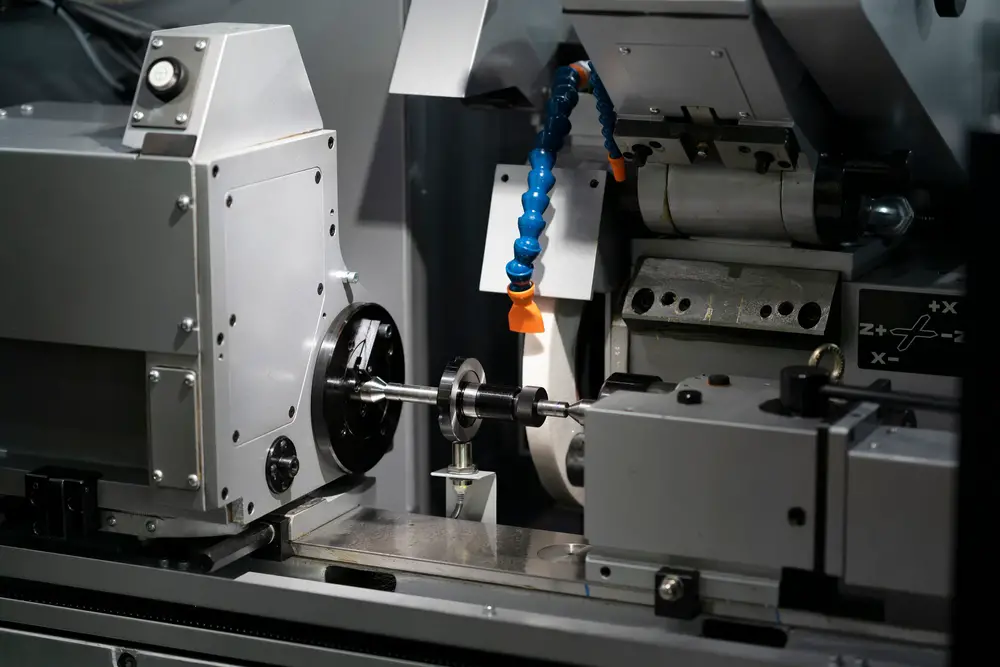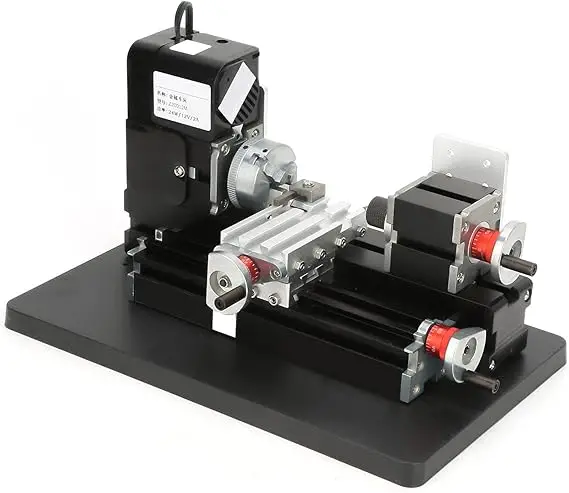Are Turret Lathes the Best Choice for Your Business?
What makes turret lathes a standout choice in machining? Are they ideal for your business needs?
Discover how these machines offer unique features that enhance productivity and precision. Learn about the advantages that make turret lathes popular across various industries. We’ll also discuss potential drawbacks to help you make an informed decision. Dive into this article to explore whether turret lathes are the right fit for your machining operations.

Unique Features of Turret Lathes
Turret lathes have transformed the manufacturing industry with their exceptional capabilities. These machines deliver precision and accuracy in machining operations, making them highly valued across various sectors. Their unique features allow for efficient production, reducing time and labor costs significantly.
Turret lathes accommodate multiple cutting tools, enabling seamless transitions between operations without manual intervention. This versatility enhances productivity and ensures consistent quality in complex machining tasks.
In the following sections, we will explore the specific features that set turret lathes apart from other lathe types.
• Versatile: Turret lathes are renowned for their versatility, performing various cutting operations like turning, drilling, and facing. They also handle boring, threading, and more, streamlining multiple machining tasks in one machine. This means that you eliminate the need for investing in separate machines for different operations.
Turret lathes save both space and costs in your workshop. Therefore, their adaptability makes them an efficient choice for diverse manufacturing needs, enhancing productivity significantly.
• Automatic Tool Changer: Turret lathes feature an automatic tool changer system, which allows quick and efficient tool swaps during operations. Consequently, this system eliminates the need for manual tool changes, saving valuable time and boosting productivity.
The seamless transitions between tools ensure that the machining process remains uninterrupted. Thus, turret lathes enhance operational efficiency by maintaining continuous workflow and reducing downtime.
• Multiple Spindles: Turret lathes feature multiple spindles, enabling simultaneous machining operations on different sections of the workpiece. This capability makes them perfect for high-volume production runs, where speed and efficiency are essential. Their ability to perform various tasks at once significantly reduces production time, enhancing overall productivity.
Click Here to Learn the Key Differences Between Engine Lathes and Turret Lathes.
What Advantages Do Turret Lathes Offer?
Turret lathes revolutionize manufacturing with their versatility and efficiency. These machines stand out for their ability to perform multiple cutting operations without manual tool changes, thanks to their indexable toolholders.
Explore why turret lathes are a smart investment for businesses aiming to optimize their machining operations.
• Increased Precision: Turret lathes have multiple cutting tools that can be easily switched out, allowing for more precise cuts and smoother finishes.
• Time-Saving: With the ability to switch between tools quickly, turret lathes help reduce downtime and increase productivity.
• Versatility: These machines can handle a variety of materials, from aluminum and brass to steel and titanium.
• Automation: Many turret lathes come equipped with automatic feeders, making it easier to produce large quantities of parts without much human intervention.
Furthermore, turret lathes also offer some unique features that set them apart from other types of lathes. For example:
• Multiple Spindles: Some turret lathes have more than one spindle, which allows for simultaneous machining on opposite ends of the workpiece.
• Bar Feeder Integration: Turret lathes can be integrated with bar feeders, which allow for continuous production without having to manually load each workpiece.
What Disadvantages Do Turret Lathes Have?
Turret lathes are impressive machines that have a lot of unique features and advantages. However, like everything in life, they also come with some disadvantages. Here are the most common ones:
• Limited tooling capacity: Turret lathes have a limited tool capacity, which can lead to more frequent tool changes. As a result, you may need to pause operations to switch tools, affecting overall efficiency. This limitation is particularly noticeable during complex tasks that require multiple tools, where it can significantly slow down production.
• Higher cost: Turret lathes tend to be more expensive than other types of lathes due to their complexity and advanced technology.
• Precision limitations: Turret lathes are renowned for their exceptional precision, but they do have limitations when handling specific cuts and materials. For instance, they may struggle with cutting extremely hard or brittle materials, which can compromise the quality of the cut.
| Disadvantages | Description |
|---|---|
| Limited tooling capacity | Only a few tools can be held at any time requiring frequent tool changes |
| Higher cost | More expensive compared to other types of lathes due to complexity & advanced technology |
| Precision limitations | Not suitable for cuts on extremely hard or brittle materials |
How Do Turret Lathes Compare to Other Lathe Types?
Turret lathes stand out in various industrial applications due to their unique advantages. Let’s explore how they compare to other lathe types in terms of speed, precision, automation, and size limitations.
• Speed: Turret lathes excel in high-speed operations, making them ideal for mass-producing smaller parts efficiently. Their rapid processing capabilities often surpass those of other lathe types, enhancing productivity in manufacturing settings.
• Precision: Turret lathes offer precise and accurate cutting due to their ability to hold multiple tools at once. This makes them perfect for intricate parts that require fine detailing.
• Automation: Turret lathes can be automated, reducing the need for manual labor and increasing productivity. In contrast, other lathe types might require more human intervention, which can lead to errors and decreased efficiency.
• Size limitations: Turret lathes are ideal for producing small and medium-sized parts, but they may not be the best choice for larger workpieces. In such cases, other lathe types that can handle bigger parts may be more suitable.
What Industries Benefit from Turret Lathes?
Turret lathes are versatile machines widely used across industries like automotive, aerospace, medical equipment, and defense. Here are some benefits of using turret lathes in your production processes.
• Automotive: Turret lathes are used to make engine parts such as crankshafts, camshafts, and connecting rods. These machines can work on multiple axes simultaneously to produce complex shapes with high precision.
• Aerospace: Turret lathes are used to manufacture components for aircraft engines and landing gear. The ability to machine hard materials like titanium and Inconel is critical in this industry.
• Medical Equipment: Turret lathes are used to make surgical instruments, implants, and other medical devices. These machines offer precise control over cutting forces and tool wear, resulting in consistent quality.
• Defense: Turret lathes play a role in the production of guns, missiles, and other military hardware. They can handle large volumes of metal removal while maintaining tight tolerances.
Are Turret Lathes a Good Investment for Your Business?
Investing in a turret lathe can be a game-changer for your business. These machines are known for their unique features that allow them to produce high-quality precision parts with ease. The advantages of using a turret lathe include:
• Increased productivity: With the ability to perform multiple operations simultaneously, turret lathes can help you produce more parts in less time.
• Improved accuracy: Turret lathes have exceptional accuracy and repeatability, ensuring that each part is made to the same precise specifications.
• Versatility: Turret lathes can handle a variety of materials and shapes, making them suitable for many different industries.
However, like any investment, there are also some disadvantages to consider:
• High cost: Turret lathes can be expensive, so it’s important to ensure that they will provide a good return on investment.
• Skilled operators required: While these machines offer many benefits, they require skilled operators who know how to use them properly.
In conclusion, if you’re looking for a way to improve your business’s productivity and precision, investing in a turret lathe may be worth considering. Just make sure to weigh the pros and cons carefully before you make your decision.
Wrapping Up
After examining the unique features, advantages, and disadvantages of turret lathes, we can conclude that they excel in specific machining processes. Furthermore, their ability to quickly switch tools and perform multiple operations without repositioning the workpiece ensures efficient results. However, turret lathes can be complex, often resulting in higher maintenance costs and a steeper learning curve.
Ultimately, selecting a turret lathe depends on your specific needs. If speed and versatility are priorities for your machining process, a turret lathe may be the ideal choice. On the other hand, if you prefer simplicity and lower costs, consider other lathe types that better suit your needs
Click Here to Learn About Harbor Freight Lathes: Are They Right for You?


